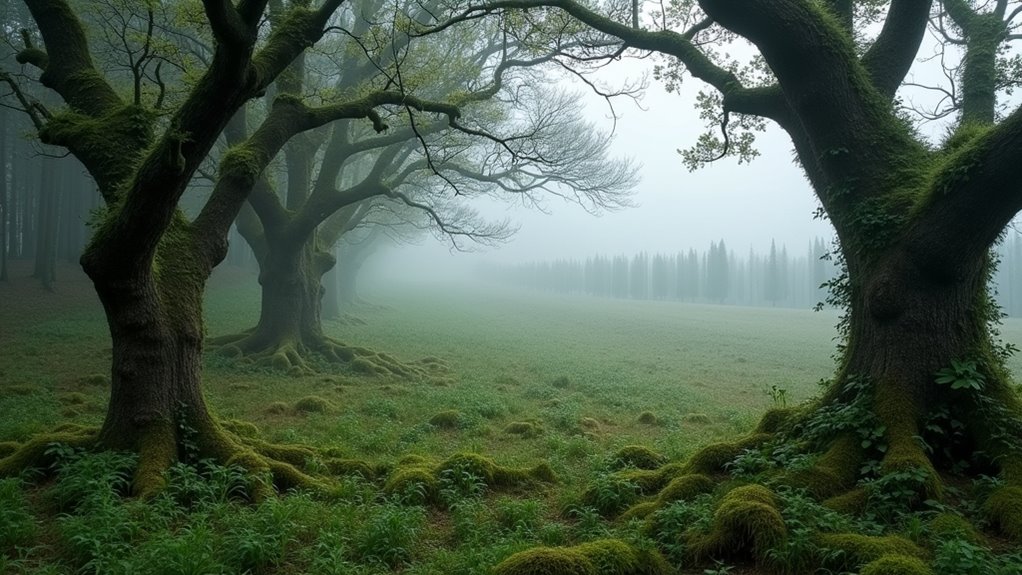Mist clings to Irish hillsides the way history clings to its stones, stubborn, ancient, impossible to shake loose. The country’s haunted sites aren’t just repositories for campfire tales and tourist attractions; they’re layered archives of violence, suffering, institutional cruelty, and spiritual transformation that have left behind a few screaming ghosts.
Take Leap Castle, where the “Elemental” and “Red Lady” wander among walls that witnessed centuries of warfare and political bloodshed. The paranormal investigators who show up with their EVP recorders might catch something otherworldly, sure, but they’re also standing in a monument to Ireland’s brutal clan conflicts and shifting power dynamics.
The Cork District Lunatic Asylum tells a different story, one of early psychiatric treatment that was often indistinguishable from torture. The derelict halls that yield EVP recordings and visual manifestations during investigations also hold records of real suffering, of people subjected to treatments we’d now consider barbaric. The ghosts, if they exist, are almost redundant. The architecture itself testifies to how society warehoused the mentally ill, and that’s horror enough without needing spectral embellishment.
What’s fascinating is how Ireland’s haunted landscape maps onto its spiritual evolution. The Hellfire Club, built atop a Neolithic passage tomb by decadent aristocrats who allegedly practiced black magic, represents layers of meaning stacked like geological strata. Pre-Christian rituals, Christian condemnation, Enlightenment-era debauchery, all compressed into one crumbling structure in the Dublin Mountains.
Oweynagat Cave underwent a similar transformation, rebranded from pagan significance into a Christian “Gateway to Hell.” The rebranding worked, apparently, people still avoid it.
Places like St. Audoen’s Church in Dublin and Trinity College demonstrate how ghost stories intertwine with institutional history. The “Green Lady” haunting St. Audoen’s steps was Darkey Kelly, a brothel madam accused of murder. Her story involves sex work, violence, and capital punishment, all bundled into one spectral package.
Professor Edward Ford at Trinity College got shot by students in the eighteenth century and supposedly never left. These aren’t just spooky tales; they’re compressed narratives of religious authority, academic power structures, and the violence that lurked beneath genteel society.
The commercialization adds another layer. Ballygally Castle and Loftus Hall, where the Devil supposedly revealed his cloven hooves before vanishing through the ceiling, now operate as hotels. You can pay to sleep where tragedy occurred, where children like eight-year-old Harriet at Charleville Castle died falling down stairs. It’s preservation through commodification, which feels both practical and slightly grotesque.
Medieval castles, Victorian asylums, ancient churches, university halls, mystical caves. Ireland’s haunted geography spans architectural styles and historical periods, but the throughline is trauma. The recent decrease in tourism has sparked divided local opinions about these spectral attractions, with some residents welcoming the respite for fragile historic sites while others lament the economic impact. At Kilmainham Gaol, children often refuse to enter the largest unoccupied prison in Ireland, where executions followed the Easter Rising, and psychics report an evil presence lingering in the chapel balcony. The ghosts serve as mnemonic devices, making abstract historical horror tangible. At St. Michan’s Church, visitors encounter naturally preserved mummies in the crypt, including an 800-year-old crusader whose undisturbed presence feels more unsettling than any apparition.
Whether you believe in paranormal activity or not, these places hold evidence of very real suffering, and maybe that’s what people sense when they report cold spots and disembodied voices. History doesn’t always need supernatural help to feel haunted.








